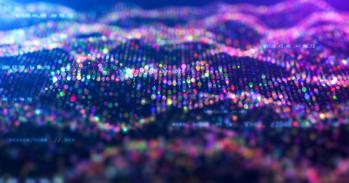The winning entries of the 2012 Photography Competition at the Department of Engineering, sponsored by Carl Zeiss, provide a stunning visual insight into the ways in which engineering makes a vital contribution to our lives.
The winning entries of the 2012 Photography Competition at the Department of Engineering, sponsored by Carl Zeiss, provide a stunning visual insight into the ways in which engineering makes a vital contribution to our lives.
Behind each image is a fascinating story of dedicated research.
Philip Guildford, Head of Research, Department of Engineering
Engineering is about much more than dams and bridges. A glance at the hundreds of stunning images submitted for the 2012 Photography Competition at the Department of Engineering, sponsored by leading optical systems manufacturer Carl Zeiss, offers a window into a world of ground-breaking research in a staggering array of fields, encompassing applications that range from new adhesives and inkjet printing techniques through to the development of replacement human tissues.
Each year four prizes are awarded with the top photographers winning items of state-of-the-art equipment that will enable them to take their photography skills to new levels. Hundreds of images were submitted for the competition which asked for pictures that both related to research or teaching undertaken in the Department of Engineering, or out in the field, and were also interesting or beautiful as works of art in their own right. The engineering subjects captured in the photographs entered range in size from the tiniest atom-scale through to some of the world’s largest structures.
This year’s judges included Professor Roberto Cipolla, Dr Allan McRobie, Professor Dame Ann Dowling and Philip Guildford – all from the Department of Engineering. Also on the judging panel was Ken Robinson, Senior Applications Specialist at Carl Zeiss. The prize winners are announced today (15 October).
Philip Guildford, Director of Research at the Department of Engineering, explained that, given the high standard of entries, the selection process was ambitious with the panel looking for images that would hold their own in a gallery such as Tate Modern or Tate Britain. He also remarked that, while the competition had begun nine years ago as “a bit of fun”, it now played an extremely powerful role in communicating visually the sheer span of engineering and the excitement of working in a rapidly-developing discipline. “,” he said.
First prize for 2012 goes jointly to Dr Ronan Daly and Dr Alfonso Castrejon-Pita, of the Inkjet Research Centre, whose winning entry (Drying Patterns of AKD on Glass) shows the drying and cracking of a film formed when an alkyl ketene dimer (AKD) dispersion is deposited and dried on a glass microscope slide. The work of these researchers explores the new generation of inkjet printing techniques which have potential applications in diagnostic and lab-on-chip technologies that could speed up the process of identifying and treating life-threatening diseases.
Graham Treece wins second prize with his computer-generated image taken from a CT scan of the head. The image (A New Way of Looking) represents more than ten years of research into new techniques for measuring variations in the thickness of the cortex (the surface of the skull) and offers a valuable new tool for clinicians looking at injuries such as fractures. Third prize is won by Pola Goldberg Oppenheimer for her image (Nanoscale Fractal Branching Patterns) of adhesive structures that mimic the ability of the gecko’s feet to stick to surfaces repeatedly without losing their stickiness.
A separate monograph prize – for images captured using an electron microscope – is awarded jointly to Ching Theng Koh and Daniel Strange who are developing electro-spinning techniques that will produce networks of fibres with diameters one millionth of a metre or less. Their image (Electrospun Scaffold – A Fibrous Material with Nanoscale Fibres) shows the fibrous networks that mimic those found in many natural materials and have potential applications as human tissue replacements.
This work is licensed under a Creative Commons Licence. If you use this content on your site please link back to this page.





